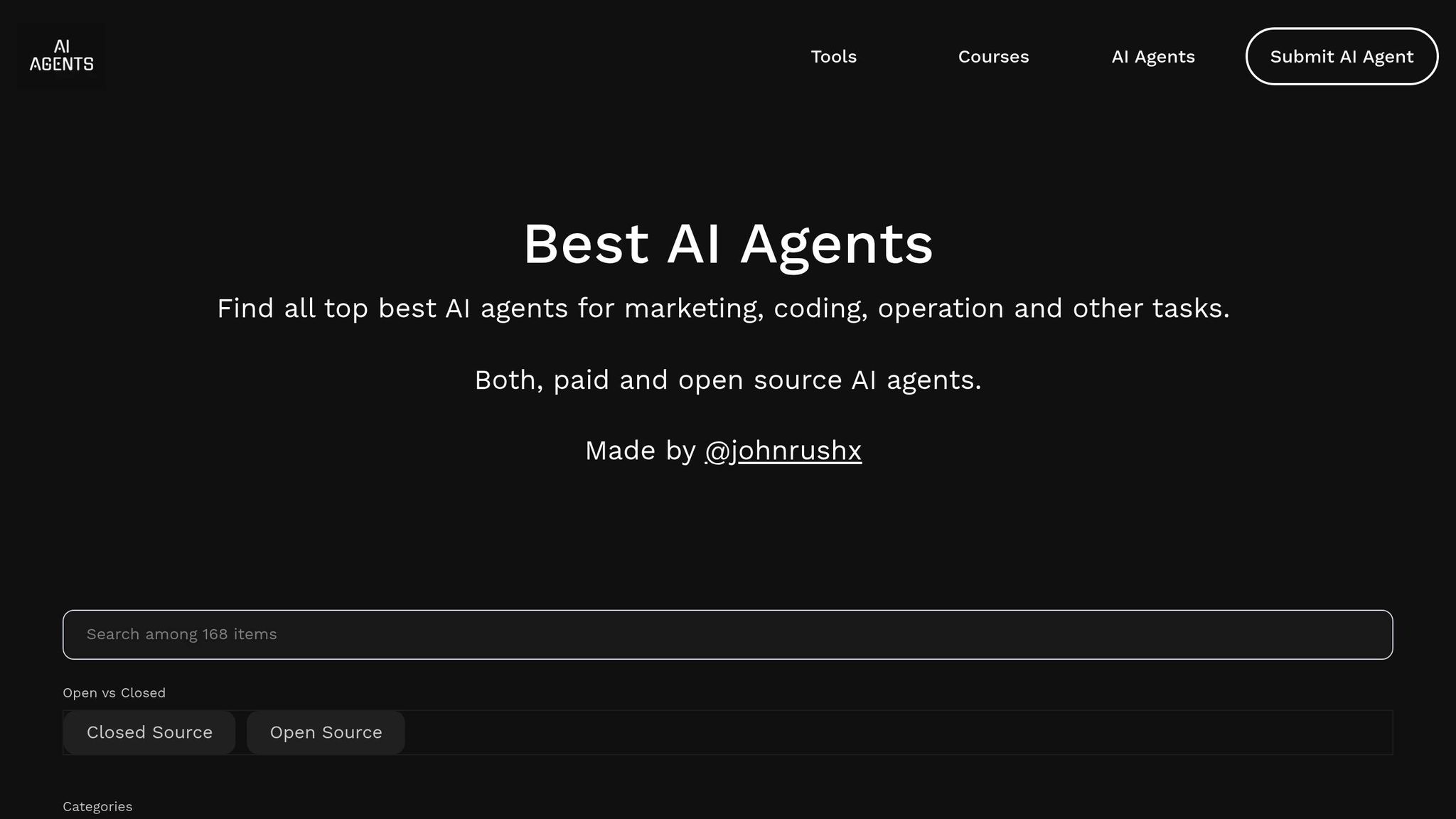Want to know if your communication is working? This guide breaks down everything you need to measure communication effectiveness. From tracking email open rates to understanding employee feedback, here’s what you’ll learn:
- Key Metrics: Email performance, digital engagement, internal communication usage, and event participation.
- Feedback Tools: Use pulse surveys, sentiment analysis, and behavioral observation to gauge personal impact.
- SMART Goals: Set clear, measurable targets tied to business outcomes.
- Measurement Tools: Leverage analytics platforms, feedback systems, and AI-powered tools for real-time insights.
- AI Benefits: Automate data collection, analyze sentiment, and predict trends to improve communication strategies.
Start with clear goals, track results consistently, and use tools to refine your messaging. Ready to dive in? Let’s get started.
How to (Finally) Measure Internal Comms Effectiveness The ...
Measuring Communication Success: Core Metrics
To evaluate communication success, it's important to track both hard data and employee feedback. A mix of these approaches gives a clearer picture of how effective your communication efforts really are.
Numbers and Data Points
Focus on measurable outcomes that tie back to your organization's goals. Key metrics to consider include:
- Email Performance: Check open rates and click-through rates to gauge interest.
- Digital Engagement: Analyze website traffic and social media interactions.
- Internal Communications: Track how often employees use tools like the intranet or shared resources.
- Event Participation: Measure attendance for webinars and other company events.
Employee Feedback and Insights
While numbers show the scale of your efforts, feedback uncovers the personal impact. Collecting this feedback can be done through:
- Pulse Surveys: Quick, targeted questionnaires to gather immediate reactions.
- Sentiment Analysis: Tools that assess the emotional tone of employee comments.
- Behavioral Observation: Watching how employees use communication platforms to spot trends.
How to Measure Communication Results
Measuring communication results means setting clear objectives and tracking outcomes systematically.
Setting Goals and Targets
Start by creating SMART goals that align with your business needs. These goals should be:
- Specific: Define exact metrics and targets.
- Measurable: Use clear indicators to track progress.
- Achievable: Set realistic expectations.
- Relevant: Tie goals directly to business priorities.
- Time-bound: Include deadlines to stay on track.
For instance, aim for something like: "Increase employee satisfaction with company communications from 70% to 85% by Q3 2025."
Setting Standards
First, take stock of your current communication performance. Focus on metrics like:
- Engagement rates
- Response times
- Message reach
- Employee satisfaction levels
Next, identify Key Performance Indicators (KPIs) to measure success. Here's a quick example:
| KPI Category | Metrics | Target Range |
|---|---|---|
| Engagement | Email open/click rates | 40-60% |
| Reach | Message reach | 90-100% |
| Effectiveness | Understanding/completion | 75-85% |
| Timeliness | Response speed | Within 24 hours |
Use these benchmarks to compare your performance against industry norms, but keep your organization's unique context in mind. Regular feedback collection will help refine these standards over time.
Getting Regular Input
Once goals and standards are in place, consistent input is key to making timely adjustments.
- Daily Monitoring: Keep an eye on engagement metrics, platform usage, and response patterns.
- Weekly Check-ins: Use pulse surveys, review effectiveness scores, and gather feedback from team leaders.
- Monthly Analysis: Compile detailed reports, analyze trends, and tweak strategies as needed.
This ongoing process ensures your communication efforts stay effective and aligned with your objectives.
sbb-itb-f88cb20
Measurement Tools and Methods
Effective communication measurement relies on tools and methods that provide reliable insights.
Data Collection Software
Analytics platforms help track performance across various channels. Here's a quick breakdown:
| Tool Type | Primary Use | Key Metrics Tracked |
|---|---|---|
| Email Analytics | Internal communications | Open rates, click-through rates, engagement time |
| Intranet Metrics | Content effectiveness | Page views, time on page, document downloads |
| Social Analytics | External engagement | Reach, shares, comment sentiment |
| Video Analytics | Multimedia impact | Watch time, drop-off points, viewer retention |
These tools can be integrated with your existing systems, allowing you to set up custom dashboards tailored to your KPIs. Beyond just numbers, collecting direct employee feedback adds depth to your communication analysis.
Staff Feedback Systems
Feedback systems provide additional insights into how communication is received. Examples include:
- Anonymous feedback channels: Encourage honest input, especially on sensitive issues.
- Automated response tracking: Collect employee reactions systematically.
- Sentiment analysis: Use AI to assess the emotional tone and impact of communication.
Combining automated tools with human analysis ensures you get both the hard data and the context behind it.
Testing and Validation
Testing ensures your measurement methods are accurate and actionable. Key approaches include:
1. Control Group Testing
Run tests with a control group to establish benchmarks for comparison.
2. Focus Group Analysis
Organize sessions to:
- Verify the accuracy of measurement tools
- Collect detailed feedback on communication clarity
- Test new measurement strategies
- Spot gaps in existing tracking methods
3. Cross-Validation
Compare data from multiple sources to get a fuller picture:
- Match survey results with engagement metrics
- Contrast automated analytics with manual feedback
- Identify trends across different communication channels
AI Tools for Communication Measurement
AI tools bring sharper insights and simplify tasks that used to take a lot of manual effort. By building on older measurement methods, these tools improve how data is collected and analyzed, delivering real-time insights that help organizations communicate more effectively.
Text and Feedback Analysis
AI-based text analysis processes large amounts of communication data to uncover patterns and sentiments. Here's what it can do:
- Analyze unstructured data from emails, chats, and surveys
- Detect emotional tones in written communication
- Spot trending topics in workplace discussions
- Monitor changes in communication habits over time
Sentiment analysis tools powered by AI go beyond manual methods, providing consistent feedback evaluation across all communication channels.
Data Processing and Forecasting
AI tools automate data collection and predict communication trends, offering several benefits:
| Function | Benefits | Applications |
|---|---|---|
| Automated Data Collection | Saves time and effort | Tracks email engagement, meeting participation |
| Pattern Recognition | Finds communication gaps | Assesses channel performance, optimizes timing |
| Predictive Analytics | Anticipates future trends | Guides resource allocation, campaign planning |
| Real-time Monitoring | Allows quick adjustments | Aids crisis management, boosts engagement |
For instance, Rebyte AI simplifies the process of gathering insights, enabling organizations to create strategies based on solid data.
Best AI Agents Tools Guide

The Best AI Agents directory organizes tools designed for communication measurement. It helps organizations find solutions tailored to their needs by categorizing tools into areas like analytics for communication effectiveness, sentiment analysis for feedback, data visualization for reporting, and productivity tools for smoother workflows. Options include both open-source and commercial tools, accommodating different budgets and technical requirements. The directory is updated frequently to reflect the latest advancements in communication measurement.
Conclusion
Evaluating how well communication works provides valuable insights that help refine decisions and improve over time. By combining regular data analysis with feedback, organizations can pinpoint areas to improve and make smarter adjustments. This ongoing process ensures messages stay clear, effective, and aligned with shifting objectives.
As outlined earlier, tracking results and making informed changes are essential for success in today’s fast-paced business world. Understanding these metrics helps organizations adapt to change with clarity and confidence.


